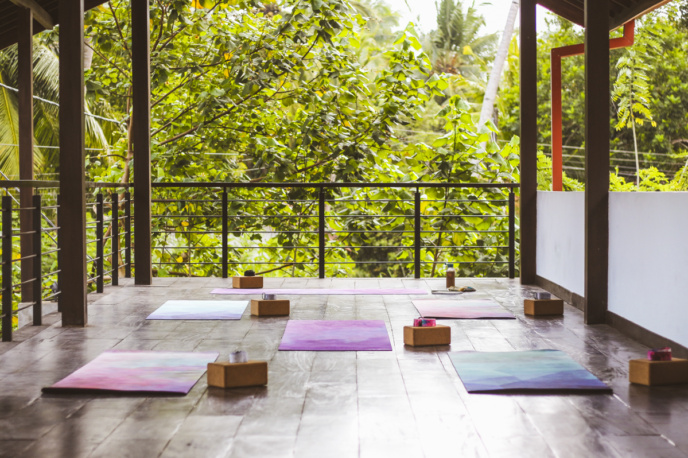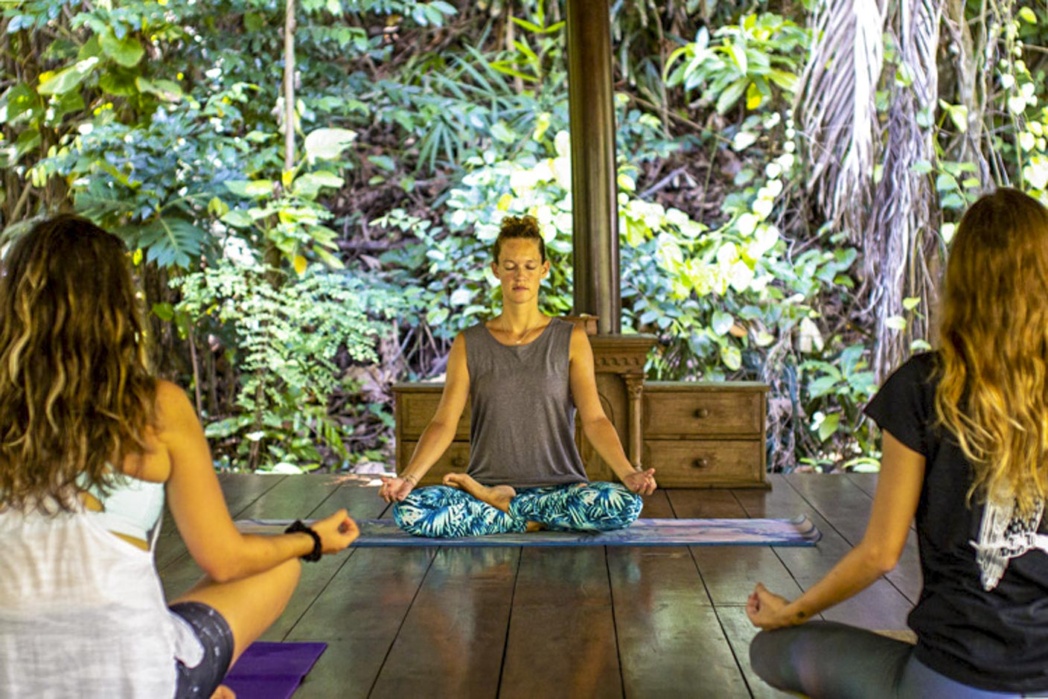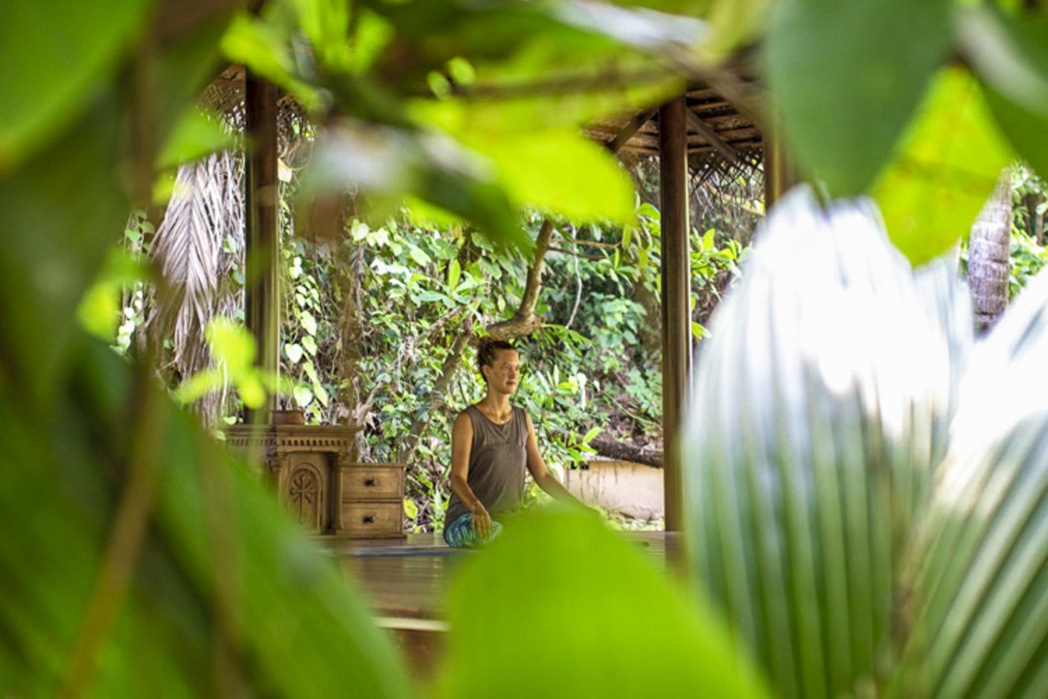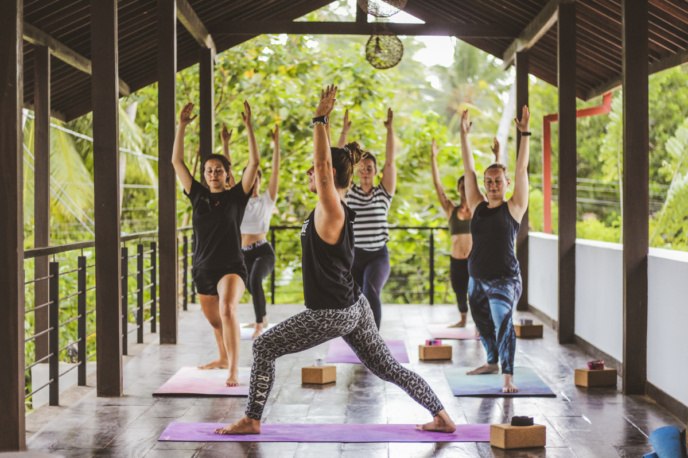
The origin and characteristics of Yin Yoga
The harmony of polarities
The Yin and Yang sign (Taijitu) comes from the Chinese philosophy of Daoism. The concept symbolizes two polarities that flow into each other and are in constant change. The dots show that one cannot exist without the other. In every Yin there is also a Yang and vice versa. It is not about right or wrong, but about the balance and harmony between the polarities. Only through a balance of the contrasting aspects is a healthy and harmonious, balanced life possible from the Daoists’ point of view.
A simple practice for everyone. Medicine for the modern world.
Slow down. Tune in. Let go. Wake up.
Special properties of yin and yang
Below you will find an overview of the two polarities Yin and Yan. The table is taken from Bernie Clark’s work “The Great Yin Yoga Book”.
YIN – YANG
dark – light
cold – warm
passive – active
inside – outside
solid – hollow
slow – fast
dim – luminous
descending – ascending
substance – function
water – fire
matter – energy
mysterious – obvious
female – male
moon – sun
night – day
earth – sky
even – odd
dragon – tiger
plastic – elastic
So yin characteristics tend to be dark, cool, heavy, slow, passive; like night or winter. Yang, on the other hand, is light, light, hot, fast and active, like day or summer. Just as night slowly merges into day, the seasons merge into each other. Yin becomes yang and yang becomes yin.
So we need both elements to stay in balance and this can also be applied to our yoga practice. Therefore, a yin practice is wonderful if the rest of our life is already very yang. As is the case in summer or in tropical climates, when we rush from appointment to appointment in our daily lives, but also after a very active, muscle-stressing sport like surfing. Then it’s time to rest, look inward, cool down and relax the muscles and mind. Then it’s time for Yin Yoga.

The specifics of Yin Yoga
Most of the yoga styles we know and practice are very active, very dynamic, and stress the muscles. They are therefore yang. A particularly dynamic example of this is the yoga style Vinyasa Flow.
Yin yoga, on the other hand, is a very slow and passive way of practicing asanas, and thus addresses what is known as yin tissue. Yin tissues, which are our joints, ligaments, fascia, and even our bones. Therefore, yin yoga is also known as fascia yoga. Yin Yoga is not a stand-alone yoga style, but rather an asana practice that can be integrated into one of the existing yoga traditions such as Hatha Yoga.
Yin Yoga is a very simple, slow and quiet yoga practice. We make use of special Yin Yoga poses. These are poses that are practiced on the floor, and held for an average of between three to five minutes. The point is not to dive as deep as possible into the pose. The effect of the pose here is achieved by holding it longer. Because it is only when we hold the poses longer and manage to relax our muscles that we can achieve an effect on our fascial tissues, ligaments and joints. In order to be able to hold the asanas for a longer time, we take aids such as blankets, blocks and pillows for support.
The 4 phases of Yin Asanas
Phase 1
Slowly find your way into the pose. If necessary, use appropriate aids, such as blocks.
Phase 2
When the personal form of the asana is found, come to rest and become completely still.
Phase 3
Hold the pose for a certain amount of time (about three to five minutes).
Phase 4
Slowly, very thoughtfully, and without muscular effort, move out of the pose.
As is true elsewhere in yoga, in yin yoga we connect our body to our breath and our breath to our mind. When our body is still and stable, our breath can calm and relax, and thus our mind can become still. Yin asana practice is complemented by pranayma and meditation at the end of a class.

Yin Yoga has a very calm, meditative character. Yin Yoga is medicine in our modern world. A world that is more and more out of balance. Our lives are becoming faster and faster, more and more performance-oriented. Our mind is more and more stimulated or overstimulated from the outside. Our planet is getting hotter and hotter. When everything around us becomes more and more Yang, then it is time for us to downshift, to pause, to let go, to wake up.
